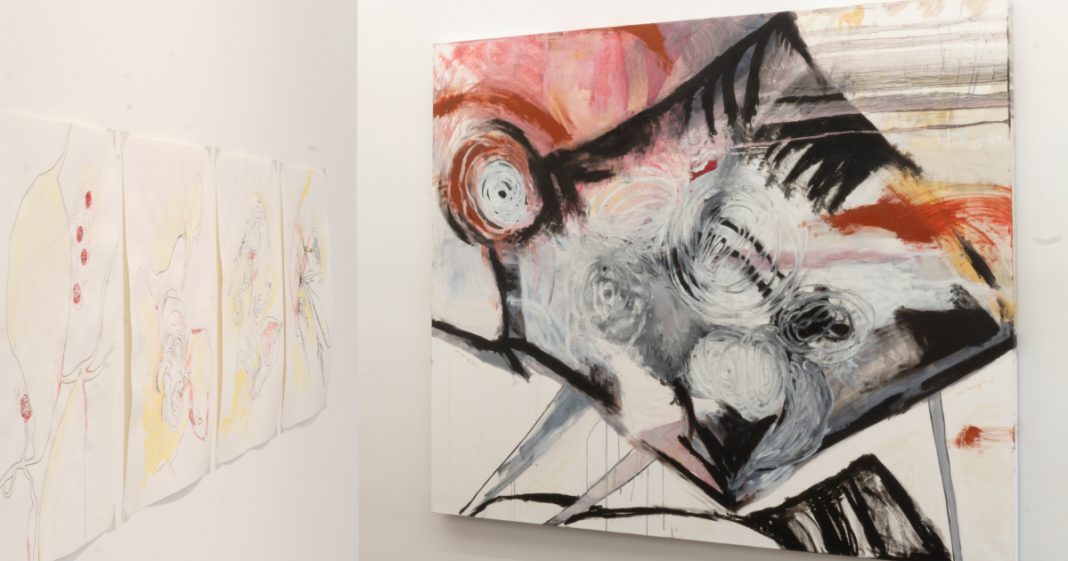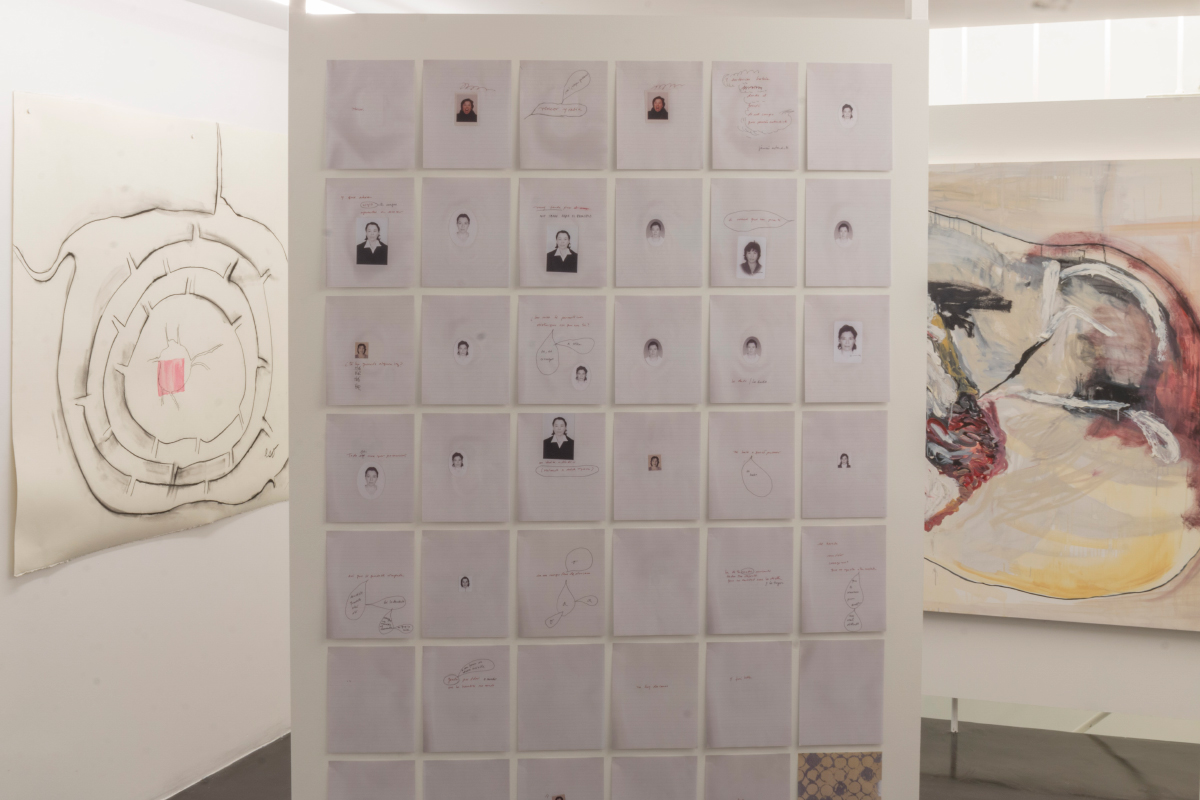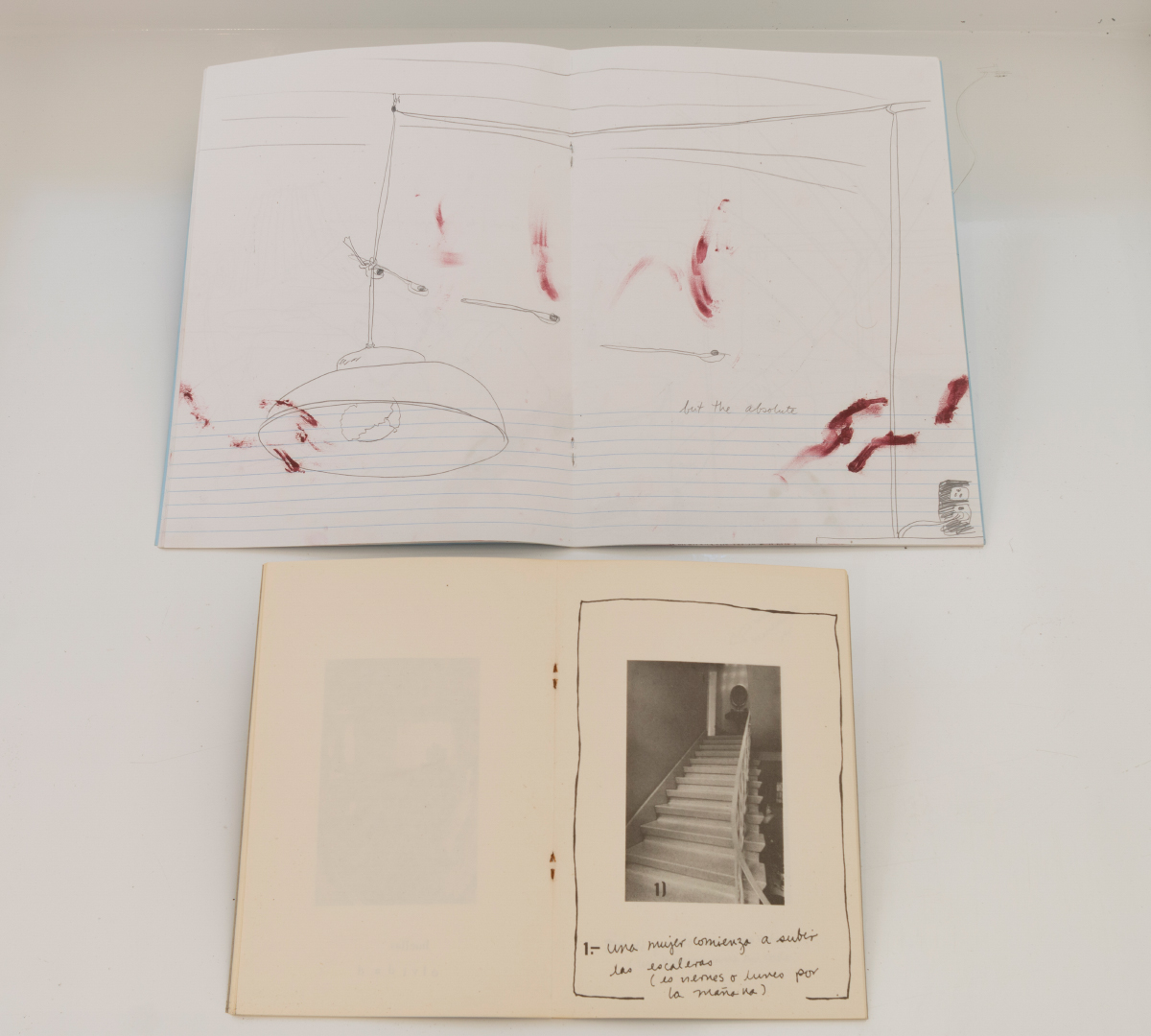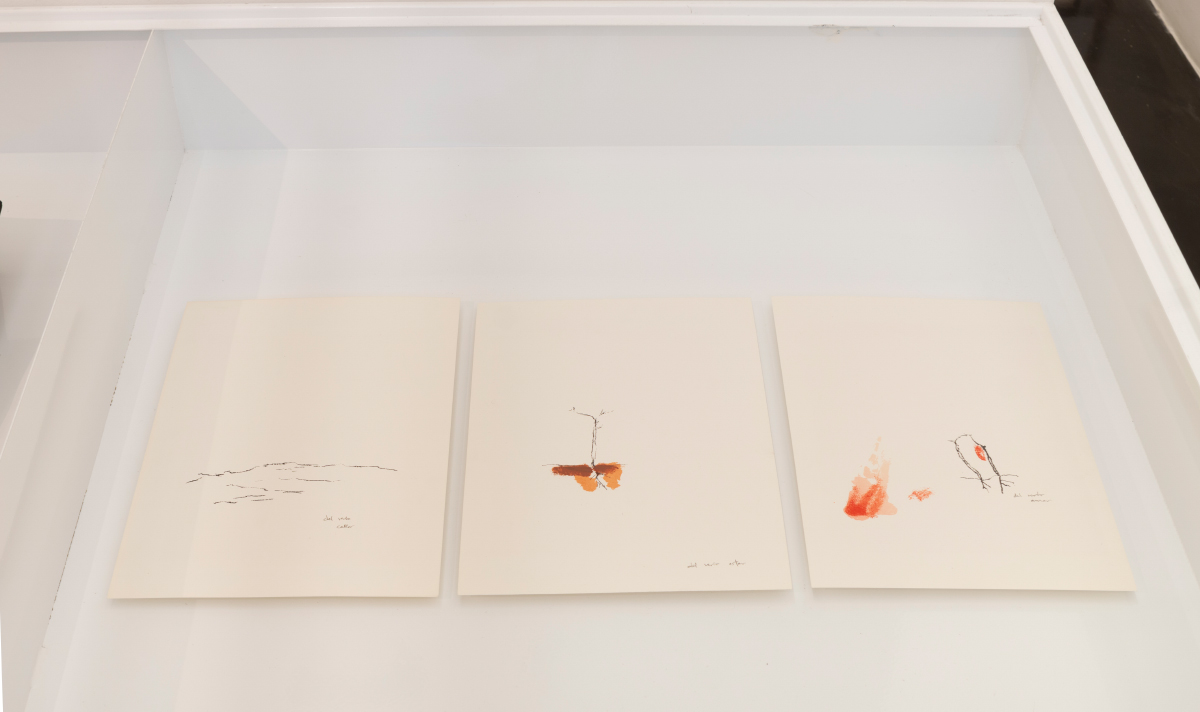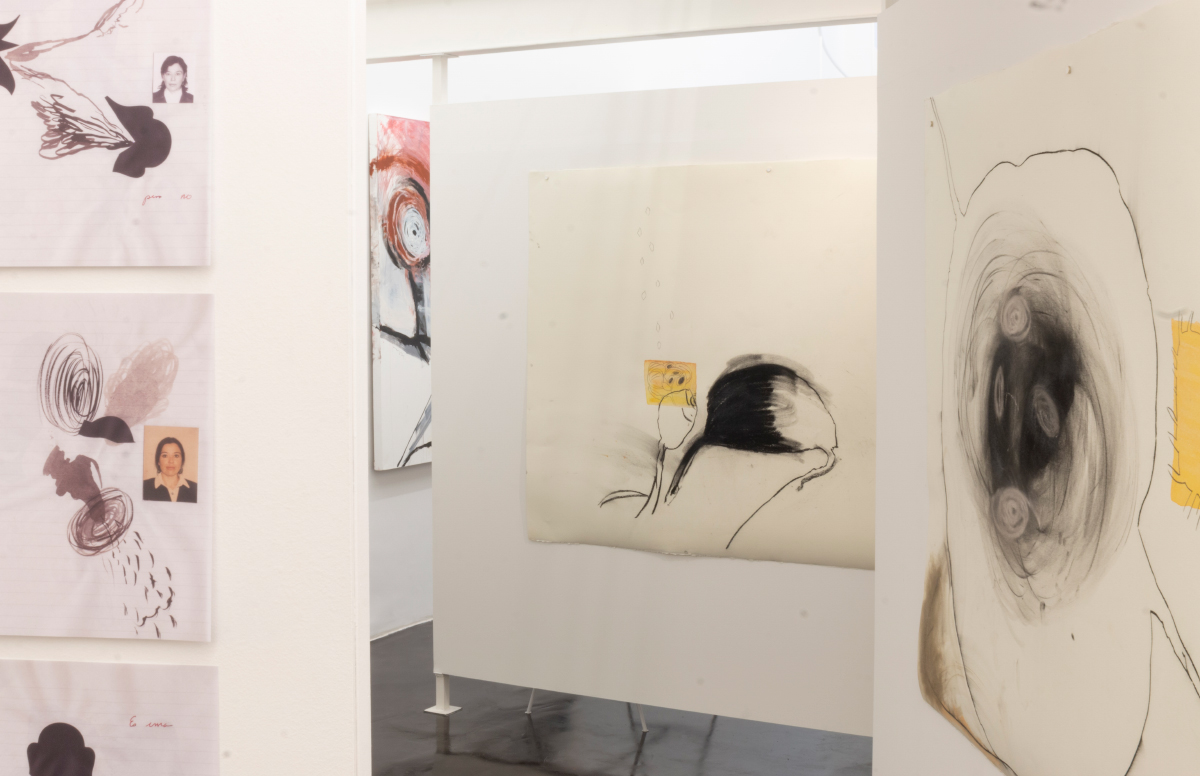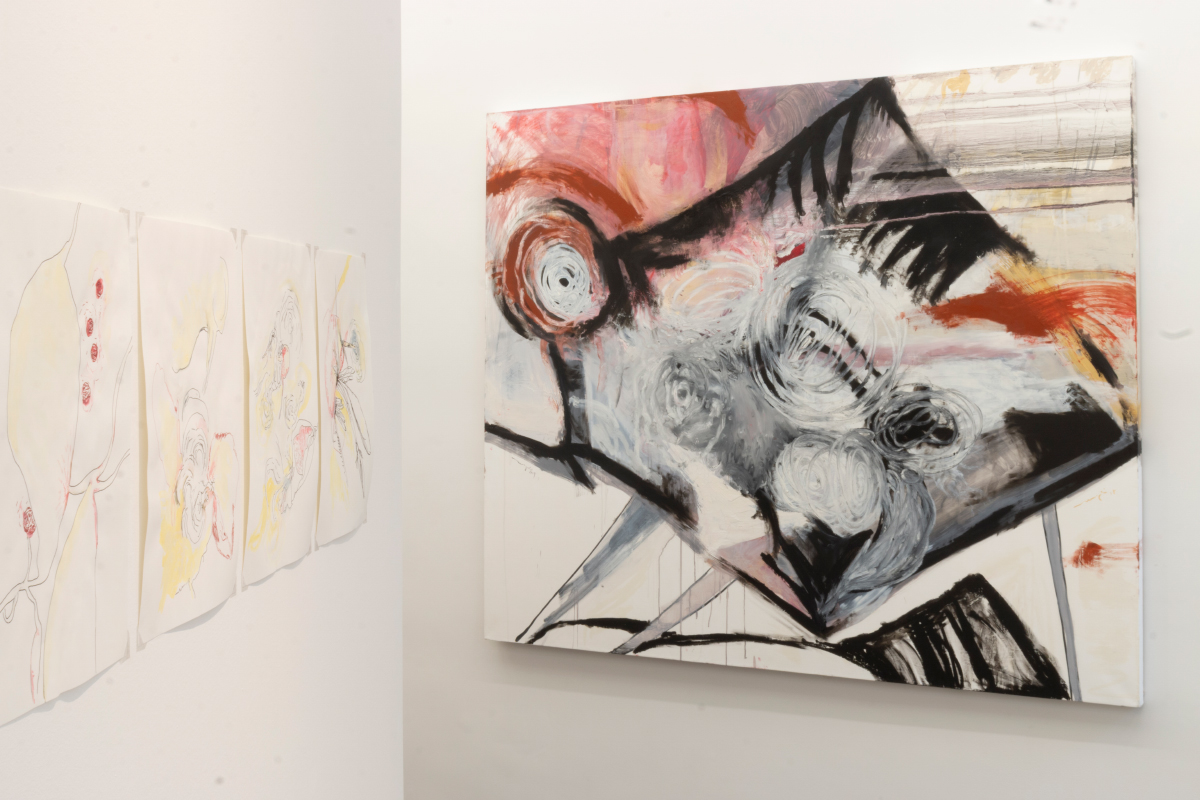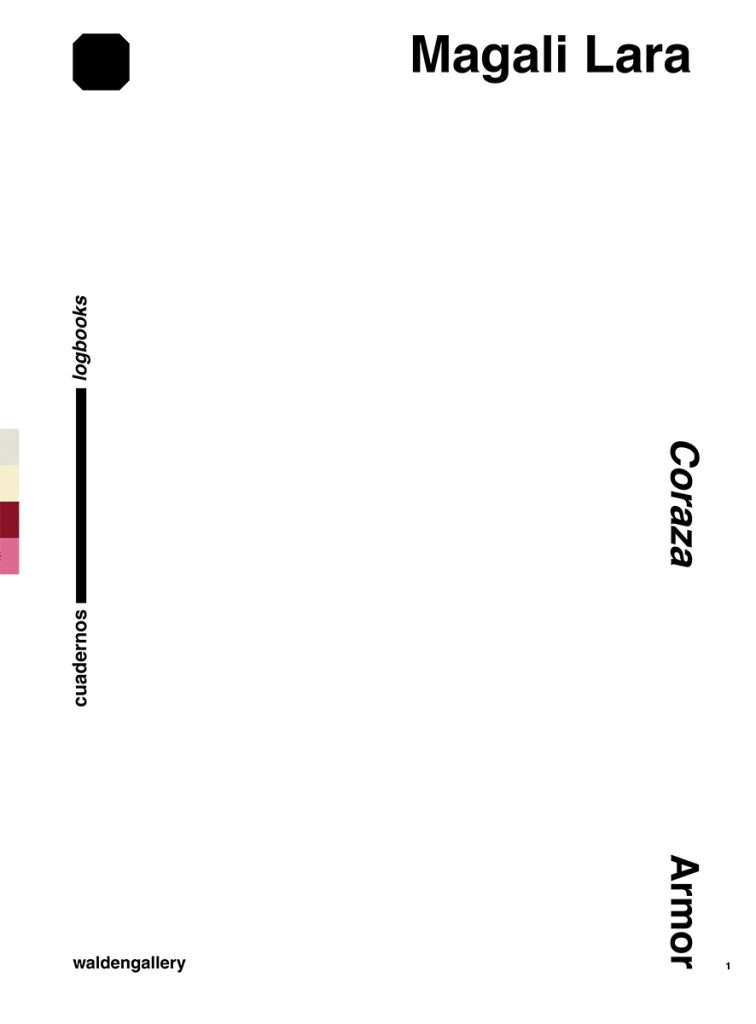Walden Gallery, Buenos Aires, 2020
Coraza. Descubrí este concepto de Wilhelm Reich a través de mi interés por lo que el cuerpo dice. El mío es un desconocido con el que me comunico a través de síntomas. Me gusta la idea de construirlo como un paisaje producto de la negociación entre el pasado y el presente. Es verdad que en estos años mi infancia y adolescencia han vuelto a surgir, como si la pérdida de la familia me recordara que comencé otro camino desde entonces, que mucho de lo que creí cierto no era más que una serie de malentendidos. ¿Esto es lo que nos contamos a nosotros mismos para explicarnos que los eventos y las repeticiones tienen un propósito? ¿O es el carácter quien lo convoca?
Tal vez envejecer se trata de desmantelar nuestra identidad y de permitir que el pasado deje de tener una explicación. Ser paisaje y ya.
Magali Lara
Armor. I discovered this concept coined by Wilhelm Reich thanks to my interest for what the body says. My body is an unknown subject with which I communicate through symptoms. I like the idea of understanding it as a landscape generated by a negotiation between past and present. It is true that in these recent years my childhood and my adolescence have resurfaced, as if the loss of my family reminded me that I took on a different path ever since, that most of the things I had believed as true, are now just a series of misunderstandings. Or is it what we tell ourselves in order to understand that both events and repetitions have a purpose? Or is it my character the one that evokes it? Perhaps growing old is about dismantling our own identity and allowing the past stop having an explanation; be landscape, that’s all.
Magali Lara
Magali Lara’s exhibition Armor proposes the artist’s re-imagination of the self after laying herself out in the open through more than forty years of work, in her retrospective Del verbo estar at Museo Universitario del Chopo in 2017. But Lara has been making herself vulnerable since she started to draw and write as a teenager, as a way of folding and unfolding her multiple identities. This has been a profoundly intimate, private and complex life project, of construction and deconstruction of the self as she has been living and creating her experiences as a woman, as an artist, as a mother, as a lover, as a friend, and as a collectivity.
Negotiating the private and the public has been a difficult and messy business since ever, particularly for women, because we have been assigned historically and socially the role of a private life that is entirely public, because our given space in society is controlled. Nevertheless, Lara has rebelled radically against this mediated and predetermined privacy and through her work, allows us to imagine an intimacy, a body, and a complexity that is forbidden, or unimagined, or repressed, or hidden. Through her “voices” we can observe and experience Lara’s embodiment of multiple and alternating perspectives. Words that may convey a meaning may be in tension with the image that accompanies it; words may behave like images and images like drawings; an abstract form may stand for the body and its fluids; a photograph may stand for an abstracted self; the small scale may be perceived as immense, and the large scale as something intimate; and so forth.
The body is at the center of the mind in Lara’s work, and the mind is at the center of the body; the heart is at the center of the mind and the mind is at the center of the heart; the erotic is at the center of the mind, of the body, and of life; at the center of the body are scattered words and both mental and emotional structures and a rich formlessness of the self, as unfolding images, mental and bodily.
La muestra de Magali Lara Coraza propone la posibilidad de la reimaginación personal de la artista tras la retrospección de sus cuarenta años de carrera. La vulnerabilidad en Lara se remonta a su adolescencia, cuando comenzó a dibujar y escribir como una manera de doblar y desdoblar sus múltiples identidades. Este proyecto de vida ha sido profundamente íntimo, privado y complejo, sostenido por la construcción y deconstrucción de sí misma en tanto ha vivido y creado sus experiencias como mujer, artista, madre, amante, amiga y como colectividad.
La negociación entre lo público y lo privado siempre ha sido una tarea difícil e incómoda, particularmente para las mujeres, porque el papel que nos fue asignado histórica y socialmente de una vida privada es completamente público, ya que el espacio que nos fue dado está controlado. A pesar de ello, Lara se rebeló radicalmente en contra de esta privacidad mediada y predeterminada a lo largo de su trabajo, dándonos la posibilidad de imaginar una intimidad, un cuerpo y una complejidad prohibidos, inesperados, reprimidos, u ocultos. A través de sus “voces” observamos y experimentamos la encarnación de las múltiples y sucesivas perspectivas de Lara. Las palabras pueden transmitir un mensaje que entra en tensión con la imagen que las acompaña; a su vez, las palabras pueden comportarse como imágenes y las imágenes como dibujos; una forma abstracta puede representar al cuerpo y sus fluidos; una fotografía puede reemplazar un “yo” abstraído; la pequeña escala puede ser percibida como algo inmenso, mientras que el gran formato se muestra como algo íntimo, etcétera.
El cuerpo se encuentra en el centro de la mente en el trabajo de Lara, mientras que la mente está en el centro del cuerpo. El corazón se localiza en el centro de la mente y la mente en el centro del corazón. Lo erótico está en el centro de la mente, del cuerpo y de la vida. Y al centro del cuerpo hay palabras desperdigadas, así como estructuras mentales y emocionales y una rica informidad de sí, como imágenes que se desdoblan, mental y corporalmente.
more information: http://www.waldengallery.com/exhibiciones#/coraza-magali-lara/


